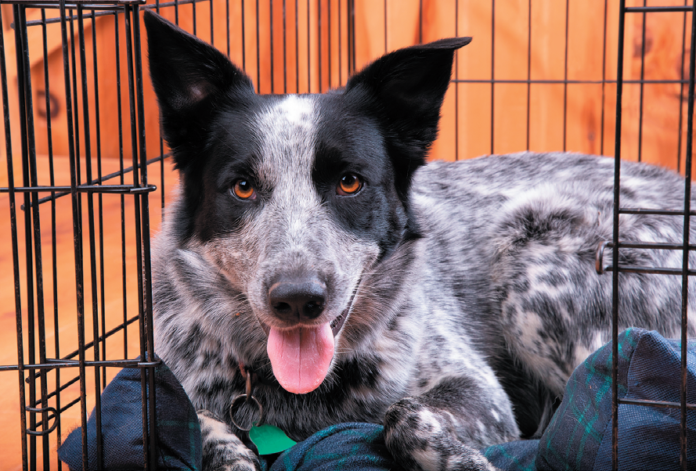Call it the canine version of a man cave or a she shed. A dog views a crate as a place to retreat to when he or she wants to get away from the action and just relax a while. The desire for a crate, or den, is so embedded in canine DNA that many crate-less dogs will create cozy getaways out of tight spaces in your home — between the couch and a wall, under a table or desk, behind a bed.
That’s why you should invest in a crate if you don’t already own one. It will really enhance the quality of your pet’s life when she needs a little “me” time.
Choose a crate that will provide a snug, but not uncomfortable, fit. It should be just tall enough for your dog to stand up in without having to hunch over, just wide enough to turn around, and just long enough so that her nose and behind don’t touch the ends.
Only the front of the crate should have a view of the “outside” world so the dog feels secure and protected rather than having sights and sounds coming at her from literally all sides. Some crates meet that need because they have solid sides and a solid top and a wired front. But if you choose a crate made entirely of wire, all you need to do
is put a throw or large towel over it so that only the door side remains uncovered.
Outfit the crate with soft bumper pads that you might find in a baby’s crib. Not only will they provide more comfort than leaning against wire. They will eliminate the possibility of trapped paws, dental damage, and collar snags. A soft, plush toy or two is a good idea, too.
Finally, keep the crate in a fairly high-traffic area of the home. That might sound counterintuitive, since the crate’s purpose is to provide some separation, but dogs generally like to be able to see the action even if they want a break from it. It’s a cozy feeling to know what’s going on without having to participate.
Granted, you may not like the idea of a crate interfering with your decor or taking up space in an often-used room. But it’s a small price to pay for a happier dog.
Some people lock their dog in a crate before they leave the house as a way to make sure they don’t create mayhem while they’re gone. We’re not big fans of using a crate for that purpose.
Pretty much the only time a crate should be locked with the dog inside is when you are “toilet” training and the dog has not relieved herself outdoors when you have taken her. Even then, it should only be for very short periods of time—with the dog’s human companion in the house to watch over her and take her out every 15 minutes or so until she relieves her urge to urinate outside instead of soiling the house.
There are instances when closing the door with the dog inside does become necessary — if you are leaving the house and she has pica, for instance, and you fear she will eat non-food substances that could harm her; if she has territorial or fear aggression and could harm visitors; or if she has separation anxiety that could cause her to try to bolt or destroy household items in her panic when you are not home.
But these instances are rare. And they need to be addressed and treated. Locking a dog inside a crate in such cases is only a stopgap solution.





